 |
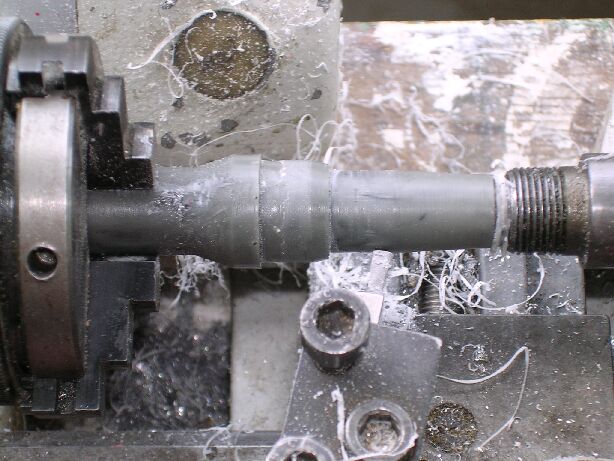
|
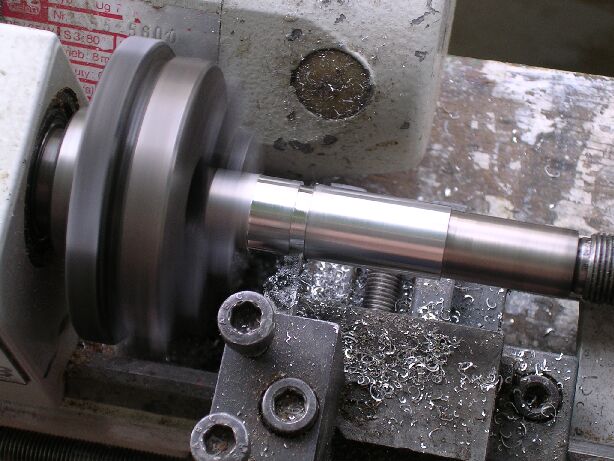 |
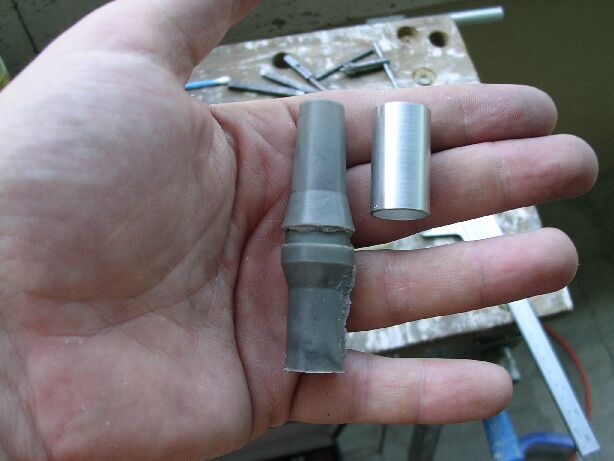 |
Warp Models Omega Destroyer
-Customized-
I have written this buildup review in the attempt to give to the intrested people some explanations about the buildup of the Omega "Brightwarrior" I did. - I am not a professional or a "semiprofessional modeller, so the oucome was satisfactory for me, but it is absolutely nothing exceptional. Anyway, I hope that this page can be useful.
This was my first resin kit, and I did not what to expect. Furtherly, i have abandoned the modelling hobby for years.
I became aware of the kit through the review on http://www.starshipmodeler.com, (see Kit review at http://www.starshipmodeler.com/b5/jl_pre_omega.htm ) and so I decided to take from the wasteland all the modelling tools, buy putty and paints, and try to build it.
The Kit
I purchased the Kit at http://www.federationmodels.com through internet (here is the specific page, Federationmodels.com/warp_models/default.htm, and received it through air mail. The kit box was in another larger box, very well protected.
Preparation of the
"custom" parts
As I said, I did not want to build a Standard Omega, I wanted to
build this: Omega Brigtwarrior , and so were needed some custom special parts,
essentially the engines, the cannons and the chin mounted
antenna.
I started with the kit engines, cutting and modifying them on a
lathe. With the same lathe I made the larger engine terminal
nozzles, starting from an aluminium tube. The assembly was easy (
I made the work to allow a good fitting between modified original
engines and aluminum made nozzles ) and the outcomes, IMO, good.
ENGINES - BUILDING SEQUENCE
|
||
|
|
||
|
CANNONS AND TURRETS - BUILDING SEQUENCE
The next step were the barrels of the cannons,
even these made with the lathe from a brass rod. One thing that I
did not take into account is that, beyond the 4 bow mounted heavy
cannons, there were 12 twin turrets, and this means 4+24 barrels
- If You find relaxating to work with a lathe, it is ok,
elsewhere making a master and building them with resin is surely
faster, while IMO a building with plastic pipes or similar can be
even more time-consuming than the lathe work. Anyway, honestly
the lathe-milled brass cannons are very beautyful.
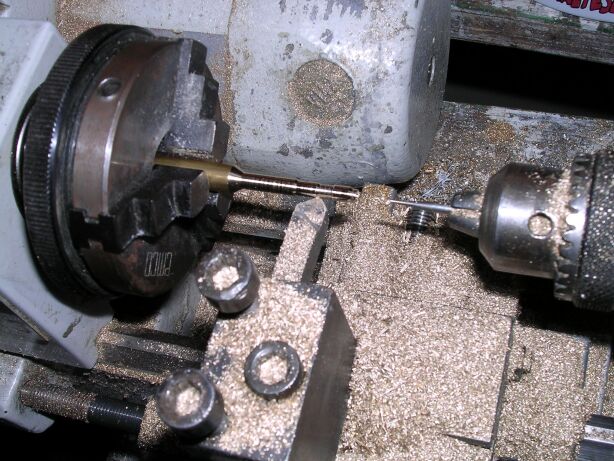
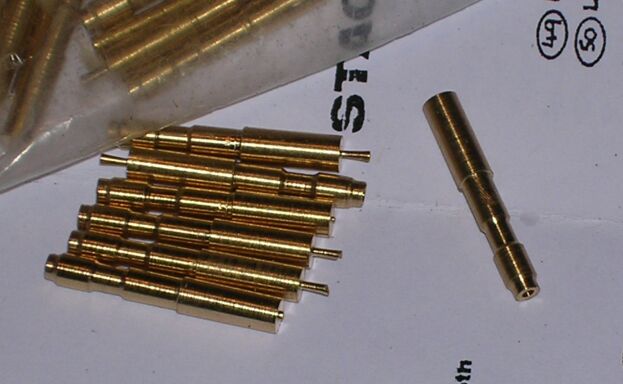
The side turrets were my first
resin work - I made a master of Evergreen styrene sheet, made a
silicone rubber mold and begun to produce turrets - The resin
must be mixed very well, elsewhere you risk to have a piece that
does not solidifies, and at this point the mold is destroyed -
Molding parts so small with a single mold means that at least an
half of the resin You use will be lost, anyway the total quantity
used is less than a couple of spoons...
AND REMEMBER TO LUBRICATE THE MOLD BEFORE EACH CASTING!
The resin cast turrets can be cleaned from the flashes with the
x-acto knife, then can be finished with files and eventually some
putty and sandpaper.
The "twin barrels" of
the side Ion cannons were glued together with superglue on a
glass plate to ensure that they were parallele, then glued in the
cast turrets. The Small details of the turrets were made of sheet
styrene strips.
|
||
 |
ASSEMBLY OF THE HULL
I proceeded with the following phases:
Assembly of the forward and rear hull - Assembly of the rotating
section, assembly of the engineering section (except the engines)
and building of the rear part, engine assembly, detailing and
painting, final details and antennas.
The main hull sections assembly is conceptually straightforward,
but to hold them exactly in place when the superglue fits
requires or four hands or a good quantity of patience and some
rubber bands - The dry fitting of the parts and the eventual
previous adjustements to be made with files and sandpaper is
essential. I suggest to assemble three sides of the hull with one
bulkhead, and after set in place the fourth sideand the other
bulkhead.

Most of the parts fits very well
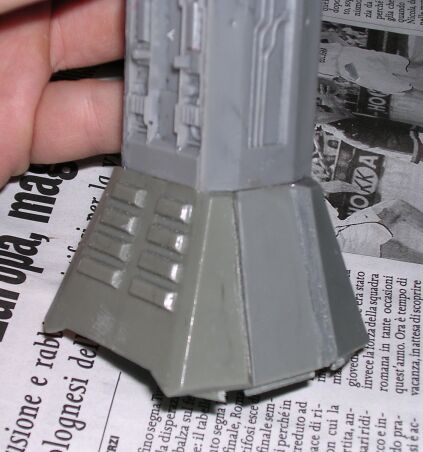
There are some seams that must be filled with putty and sanded -
nothing exceptional - overall it fits well.
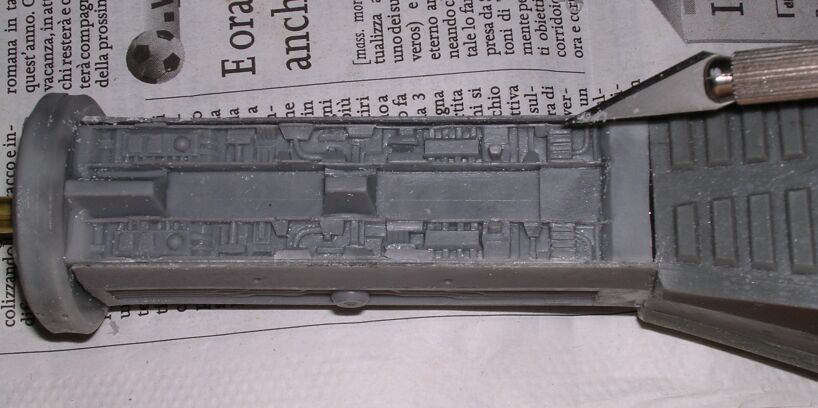
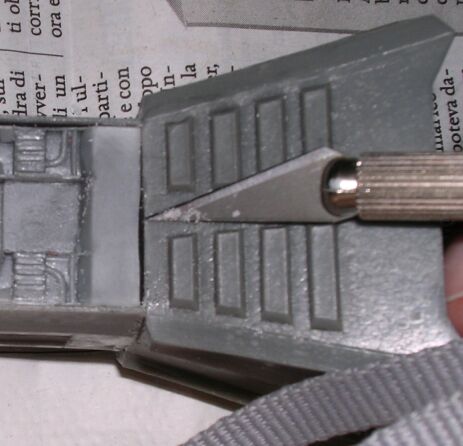
The forward "hammer" was much more easy than one can
expect, the instructions provided are excellent and the parts
fits well, requesting only minor adjustements.
The engine section is a problem: while the halves and plates that
build up the engine block (the truncated pyramid armoured piece),
after some dry fitting and minimal adjustement comes out pretty
well, the rear plate that would have to hold in place the four
engines, the engine cradles and the rear cannons was warped, and
each engine pointed at a differnt location of the universe,
instead to be parallele: my suggestion is to use this
"engine bulkhead" in the assembly of the rear block,
then remove it and replace it with a part made of sheet styrene,
that it is planar, and so allows a decent engine assembly: a
styrene sheet "clone" of the original bulkhead is IMO
the best solution, it is faster to build than to try to eliminate
the warping of the original part, and a plane bulkhead is
essential to allow a decent engine assembly.
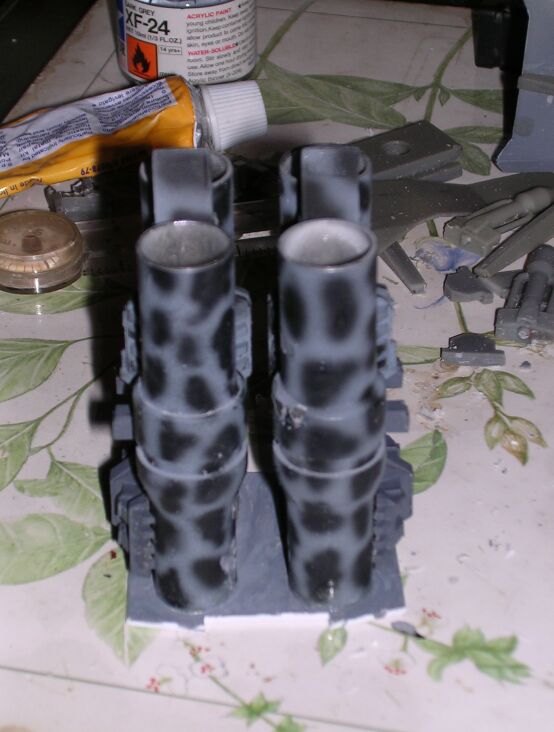
I did this, with a plate of evergreen sheet styrene 1.5mm thick,
with reference holes for pins of the engine cradles.
I have found the engineering section, the cluster of the four
engines and of the four rear cannons to be the most difficult of
the kit. Must anyway be remarked that the details of the parts
are excellent.
The rotating section is easy - six large resin parts, they must
be dry fitted, then can be assembled.
For the whole kit I used superglue (Cyanoachrilate), but for the
rotating section I used essentially epoxy glue, to pre-fill the
seams and allow a superior useful adhesive surface: as can be
seen in the figure, the epoxy glue works well, some putty will
fill the joints pretty well, but most part of the seams are yet
filled by the epoxy.
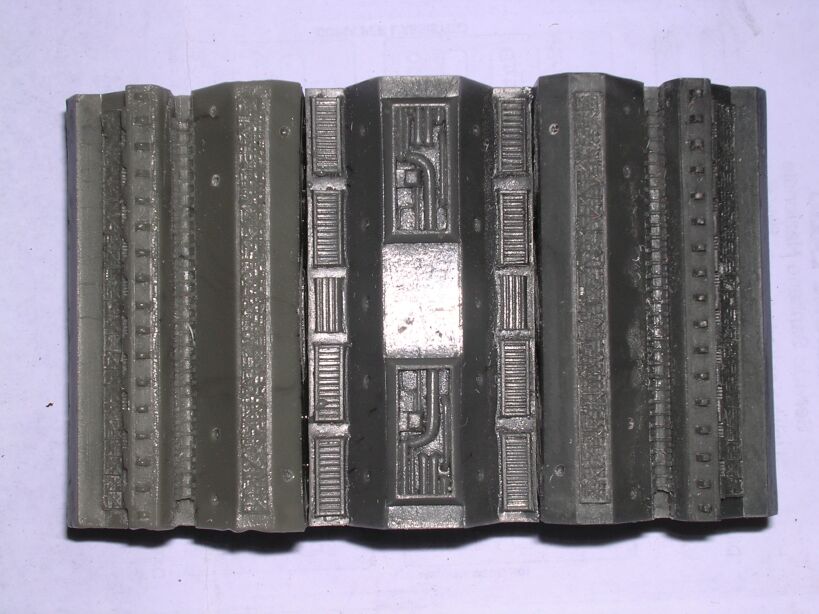
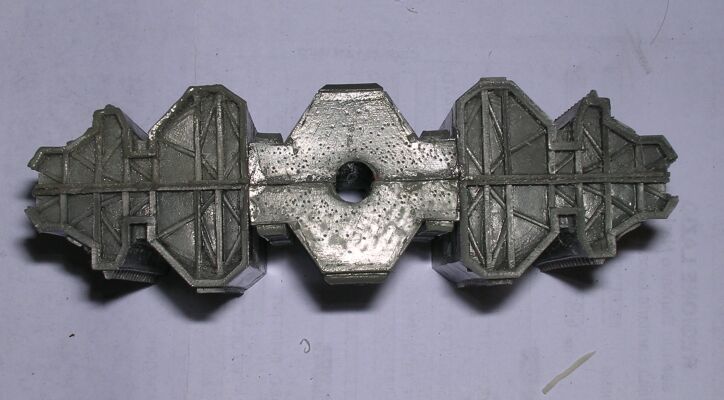
The final assembly with the
central brass tube that holds everything together is
straightforward, but pay attention to quickly aligne the rear and
forward assembly before the glue fits.
The side cannons of the "true" Omega are placed in a
position in which their primary targets are parts of the ship
they must defend - I made the sponsons where are placed the side
gun mounts with sheet styrene stripes. Even the supports of the
more backwards main cannons placed on the sides of the hammer are
made of Evergreen 1/4" styrene tube and styrene sheet.
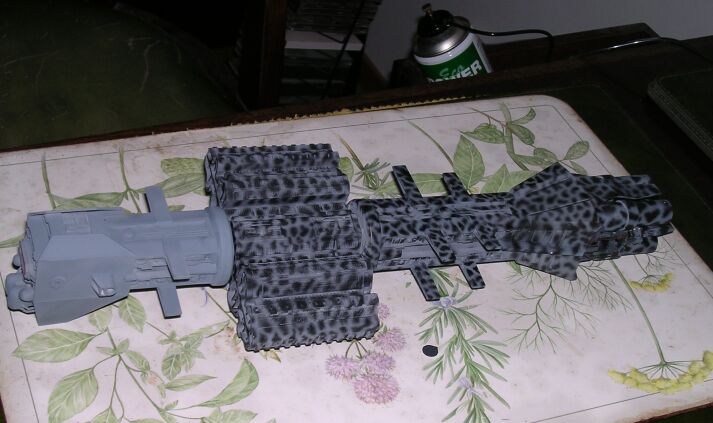
I put in place the cannons and the antennas after the painting
job - The white metal antennas fits well, the steel rod ones
require to drill a couple or so of holes with a 1mm drill bite -
Set your dremel at the slowest speed, or use a hand hobby drill -
the resin is not very hard, and a fast drill will melt it or make
craters instead of holes.
The chin mounted long gravitic antenna, the one with the two
black bulges at the ends, is built with 5/32" styrene tube,
while the bulges are aluminium parts, about 5.5mm of diameter
made with the lathe.
Painting and Finishing
I Wanted a paint scheme recalling the "Shadow Armour"
seen in the show (The "Omega Epsilon" is a ship of the
2270's, developed in the hottest period of the Drakh War, and the
Earth Alliance put in it every bit of technology she was able to
develop, steal or recover).
Most part of the painting was done with a Badger Air Brush and
acrylic paints - A step forward respect to the Enamels I knew
when I was a boy -
I painted the whole model with a layer of Tamiya Acrylic primer
(spray can) and with a layer of Tamiya acrylic light grey XF-66 -
The black pattern of the "Shadow -derivated Armour" is
airbrushed with Tamiya matt black XF-1. The airbrush was setted
to spray a very thin stream.
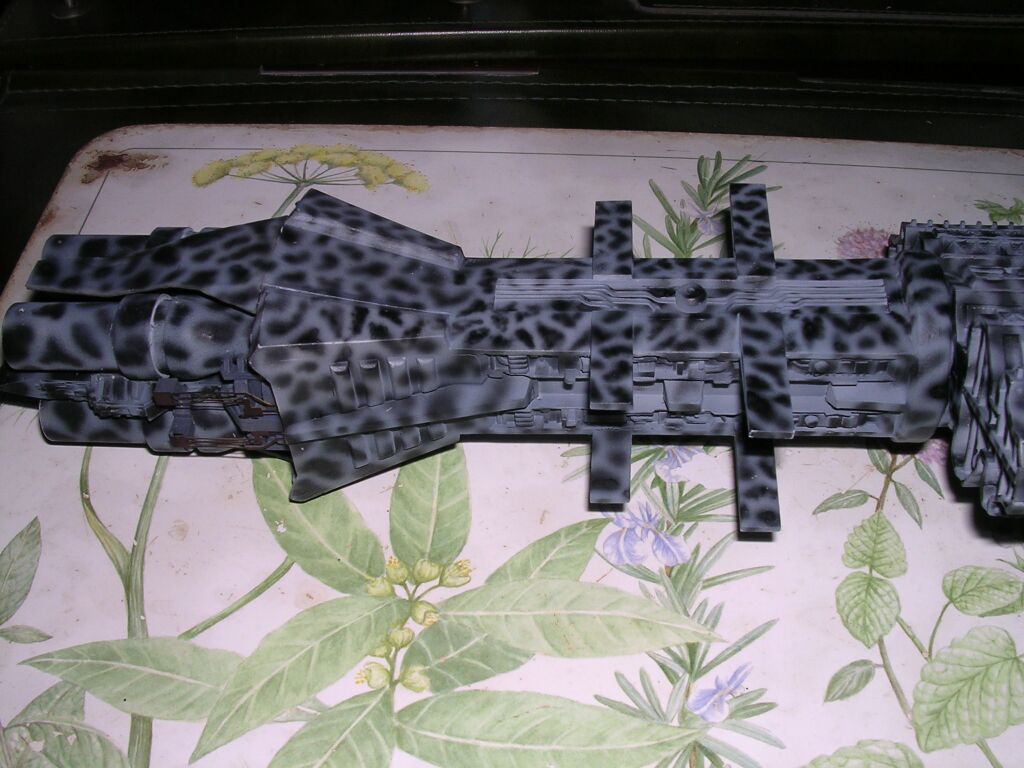
Some details, like the bases of the antennas, the sensor domes
and the chin mounted oval plasma mortars are painted in a darker
grey, XF 24 dark grey - the red parts like the inner part of the
hangar and the side mounted hatces of the escape lifepods are
painted in XF-7 flat red, with a brush.
The barrels of the cannons are XF 24 dark grey, and X-10 Gun
metal for the recessed belts. The placement of the cannons was
the last step of the assembly, the decals were excellent, while I
made easily the nameplate drawing it with Microsoft Paint - I cut
the "nameplates" from the paper sheet I painted them
on, then I put them on a strip opf two-sided adhesive scotch and
covered them with normal scotch - cut them at the right
dimensions and then apply on the finished model.
Overall, a decent work, but nothing more: some weathering would
improve a lot the model, showing better the details.
The base is a simple perspex (plexiglas) plate in which I made
two holes - I made the conical support columns with the lathe,
drilled one 2.5 mm. hole under the belly of the ship to hold a
spine placed on the rear column, while the forward column has not
a spine, the model simply rests on it.

Overall, I have found this an excellent kit, amusing to build. A bit more attention to avoid the warping of the main structural parts would be welcome, but the kit as a whole is fine, in excellent accordance with the original of the series, even if not to be recommended to a beginner due to the large number of parts and, I presume, to the intrinsecal difficulties of a resin kit. Anyway, after this building, I have bought even the Warp Model's Nova Dreadnought - This can be a clue that the outcome and the satisfaction, at least for me, deserves both the expense and the effort.

